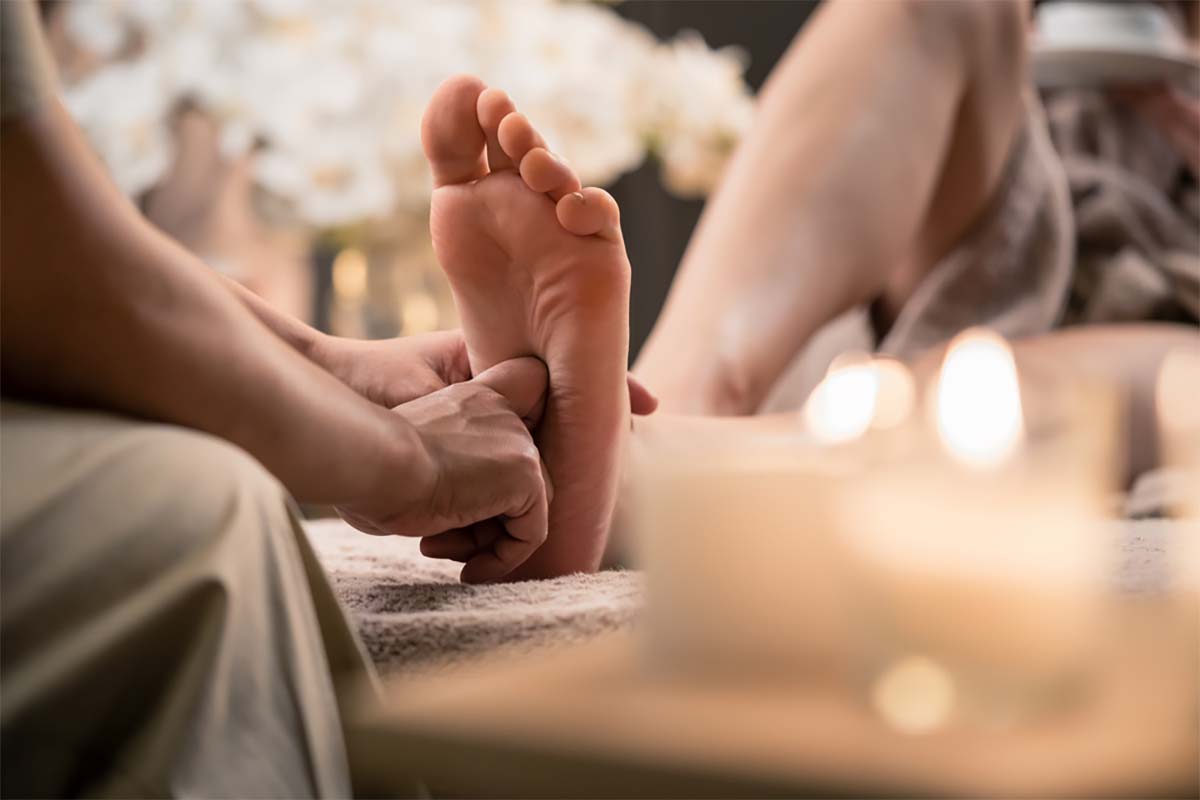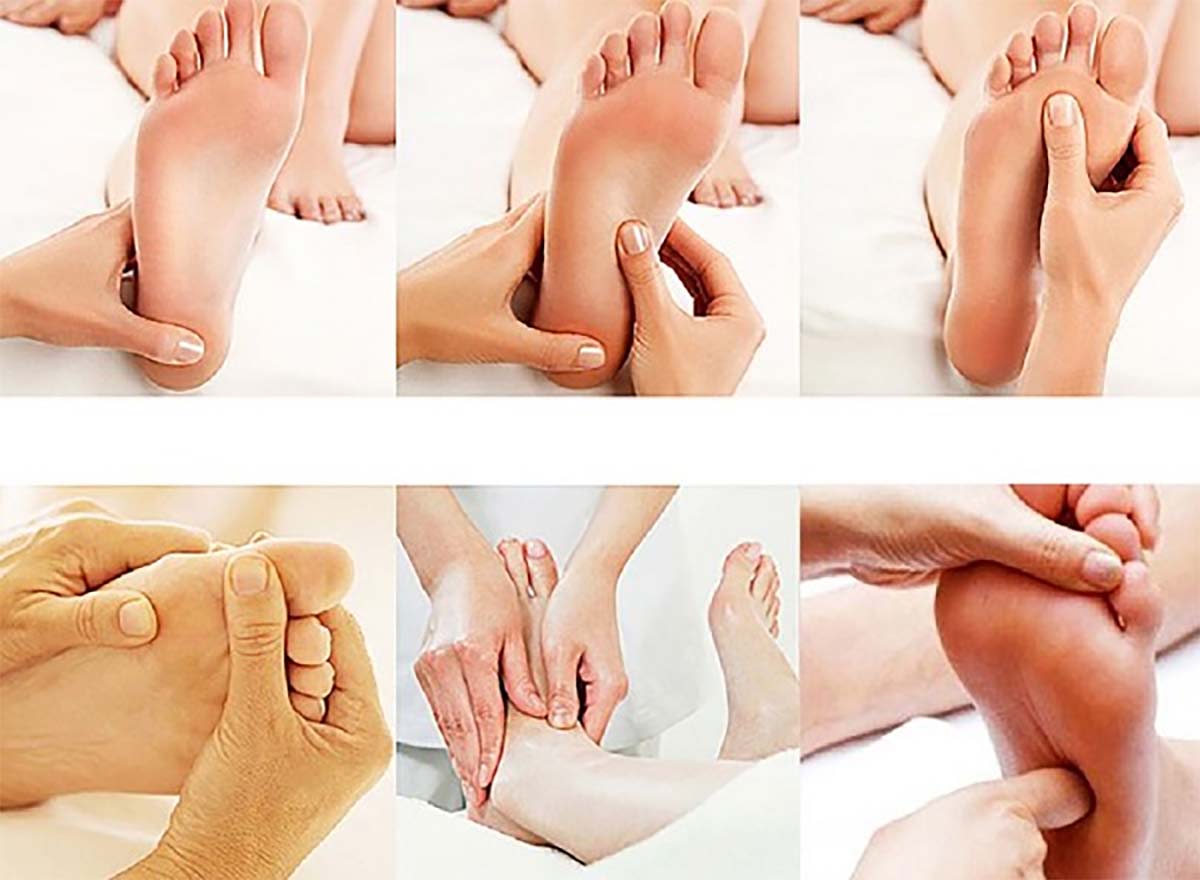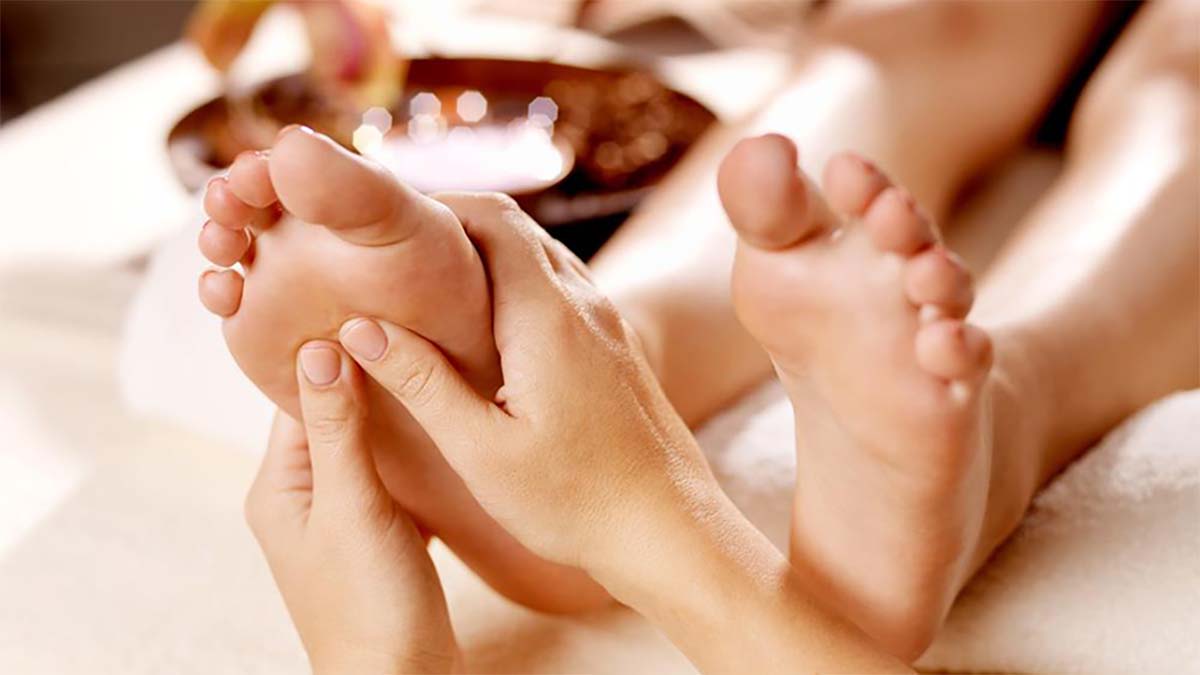RECOVERY THERAPY [SALE 15%]

-------------------------------------------------------------
MASSAGE ANMA PROMO [SALE 20%]
-------------------------------------------------------------
PREMIUM SPECIAL 3 IN 1 [SALE 15%]


-------------------------------------------------------------
-------------------------------------------------------------

PROMOTIONS premium special
>> Click to view <<
-------------------------------------------------------------
-------------------------------------------------------------

Reflexology is a therapeutic foot massage technique based on the principle that specific areas on the feet (and hands) correspond to organs and systems throughout the body. By applying pressure to these reflex points, practitioners aim to promote health, reduce stress, and restore balance. This comprehensive guide explains how reflexology works, its benefits, and what to expect in a session.
Mục lục
Reflexology is an ancient practice with roots in Traditional Chinese Medicine, Egyptian hieroglyphs, and Ayurvedic traditions. Modern reflexologists map the feet to pinpoint reflex zones that mirror different body parts—such as the heart, lungs, liver, and intestines. Stimulating these zones is believed to improve the flow of energy (“Qi”) and support the body’s natural healing processes.

Reflex Maps: A foot is divided into reflex zones—each zone correlates with a body region.
Pressure Application: The therapist uses thumbs, fingers, and specialized tools to apply firm, targeted pressure.
Energy Flow: Pressing reflex points releases blockages, allowing energy to flow freely and improving organ function.
Neurovascular Response: Stimulation improves blood circulation and nerve impulses to corresponding body parts.
Stress Reduction: Promotes deep relaxation by balancing the autonomic nervous system.
Pain Relief: Helps alleviate headaches, back pain, and other chronic discomforts.
Improved Circulation: Enhances blood and lymphatic flow, reducing swelling and fatigue.
Enhanced Sleep: Many clients report better sleep quality after sessions.
Digestive Health: Stimulating digestive reflex points can support gut function.
Immune Support: Regular sessions may help strengthen immunity by promoting overall balance.

| Reflex Point | Location on Foot | Corresponding Body Part/Function |
| Solar Plexus | Center of foot | Stress relief, adrenal support |
| Heart | Pad of left foot, below toes | Cardiovascular health |
| Lungs | Pads of both feet | Respiratory function |
| Liver & Gallbladder | Arch of right foot | Detoxification, digestion |
| Kidneys | Mid-arch | Fluid balance, waste elimination |
| Intestines | Heel and ankle area | Digestive regulation |
Consultation: Discuss health history, concerns, and goals.
Preparation: You’ll sit comfortably while the therapist examines your feet.
Footwork: Warm-up, followed by targeted pressure on reflex points.
Duration: Sessions typically last 45–60 minutes.
Feedback: Therapists may adjust pressure based on comfort and response.

Anyone experiencing stress, anxiety, or insomnia.
Individuals with chronic pain—especially headaches, back pain, or joint pain.
Those with digestive issues or poor circulation.
People seeking complementary therapy alongside conventional treatments.

Avoid reflexology during acute foot infections, wounds, or severe varicose veins.
Consult a healthcare provider if you’re pregnant, have deep vein thrombosis, or severe circulatory problems.
Use caution if you have diabetic neuropathy or foot ulcers.
Warm-Up: Rub feet with lotion to increase circulation.
Thumb Walking: Use your thumb to “walk” over each reflex zone.
Hold-and-Press: Apply steady pressure for 5–10 seconds on sore spots.
Massage Tools: Use reflexology balls or rollers for added stimulation.
Routine: Practice 5–10 minutes daily for best results.

Reflexology complements massage therapies, acupuncture, chiropractic care, and aromatherapy—creating a holistic wellness plan.
Reflexology foot massage offers a unique, non-invasive way to support whole-body health. By stimulating reflex points, it fosters relaxation, improves circulation, and helps the body heal itself. Whether you seek relief from specific ailments or overall wellness, reflexology can be a powerful addition to your self-care routine.
Ready to relax, recharge, and restore your body from the ground up?
Book your reflexology session today and discover the powerful benefits of healing through your feet!